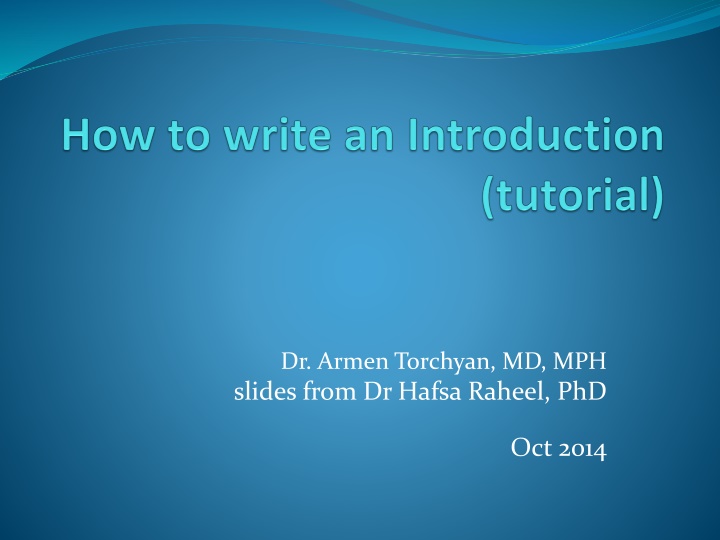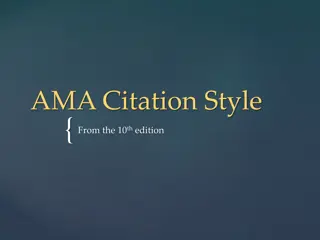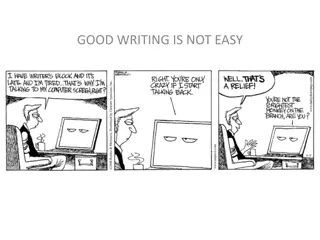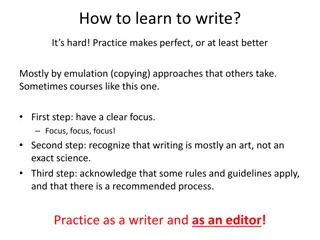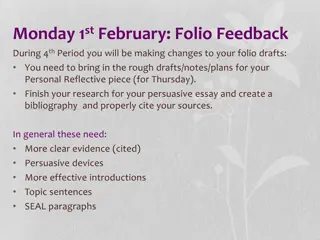Mastering the Art of Writing Effective Introductions for Manuscripts
Enhance your manuscript writing skills with insights on the structure and key components of an introduction. Learn about the importance of clarity, concise writing, and common mistakes to avoid when crafting your introductory section. The provided guidelines help you create engaging introductions that set the stage for your research work.
Download Presentation

Please find below an Image/Link to download the presentation.
The content on the website is provided AS IS for your information and personal use only. It may not be sold, licensed, or shared on other websites without obtaining consent from the author.If you encounter any issues during the download, it is possible that the publisher has removed the file from their server.
You are allowed to download the files provided on this website for personal or commercial use, subject to the condition that they are used lawfully. All files are the property of their respective owners.
The content on the website is provided AS IS for your information and personal use only. It may not be sold, licensed, or shared on other websites without obtaining consent from the author.
E N D
Presentation Transcript
Dr. Armen Torchyan, MD, MPH slides from Dr Hafsa Raheel, PhD Oct 2014
Objectives of the session By the end of the session the students should be able to: Understand the structure of an introduction to a manuscript\report
Structure of a manuscript/report Abstract Introduction Materials and methodology Results Discussion Conclusion Acknowledgement References
Skeleton of an introduction Background Importance of the topic Global, regional and local data (magnitude) Build up a convincing argument Objectives Hypothesis Rational
Frequently asked questions 1. How long should my introduction be? Onecommon mistake is towritean introduction that is too long; the introduction is sodetailed that it is indistinguishable from the bodyof the essay! As a rule, an introduction should not be longer than about 8% (about 1/4th) of the length of the essay. For example, the introductionof a ten, fifteen, and twenty- page essay should bea maximum of abouta page, a page and aquarter, and oneand an half pages respectively.
Frequently asked questions 2. How detailed should the introduction be? Another common mistake is that the introduction is so detailed that it fails to indicate the topic of the paper in a Clear way! The introduction only needs to state the topic, general structure, and thesis of the paper.
Frequently asked questions 3. Why am I finding it hard to write the introduction? Its absolutely normal to be worried as this may be your first time Language barrier Write at least a draft of the body and redefine it later on
Frequently asked questions 4. What is an introduction for? Is it a summary? An introduction is not a summary. A summary repeats the main ideas of an essay. An introduction introduces the reader to the topic of the essay, and explains the point of the essay
Frequently asked questions 6. How many paragraphs should I use for the introduction? Introductions vary in length according to your purpose, writing style, the complexity of your topic, and the length of your essay
Frequently asked questions 7. How do I write the references? Vancouver reference styling is the preferred But its wise to refer to the author's guidelines of the journal you intend to submit to (or your course guideline)
How to evaluate your introduction draft Ask a friend to read it and then tell you what he or she expects the paper will discuss If your friend is able to predict the rest of your paper accurately, you probably have a good introduction
References The writing center. University of North Carolina at Chapel Hill. http://writingcenter.unc.edu/handouts/introduction s/ Visit York Centre for Academic Writing online resources at: http://www.arts.yorku.ca/caw/resources.html
